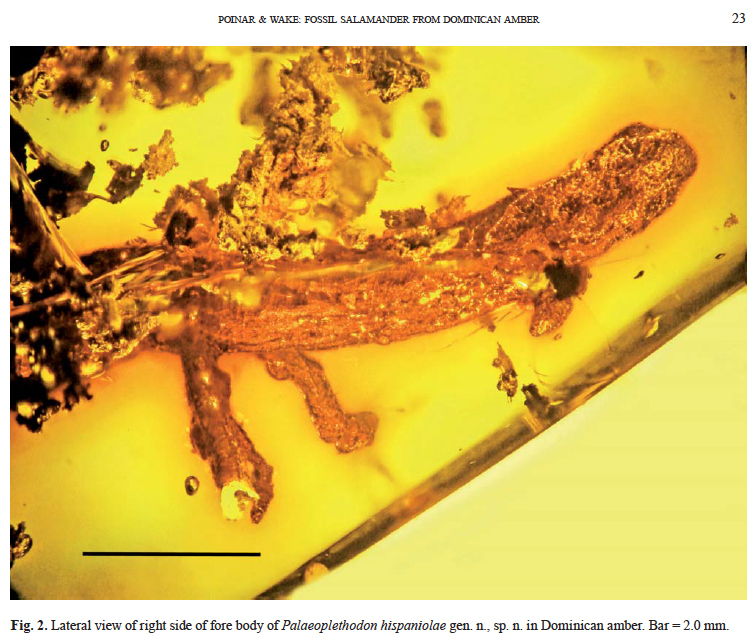-
Tips for becoming a good boxer - November 6, 2020
-
7 expert tips for making your hens night a memorable one - November 6, 2020
-
5 reasons to host your Christmas party on a cruise boat - November 6, 2020
-
What to do when you’re charged with a crime - November 6, 2020
-
Should you get one or multiple dogs? Here’s all you need to know - November 3, 2020
-
A Guide: How to Build Your Very Own Magic Mirror - February 14, 2019
-
Our Top Inspirational Baseball Stars - November 24, 2018
-
Five Tech Tools That Will Help You Turn Your Blog into a Business - November 24, 2018
-
How to Indulge on Vacation without Expanding Your Waist - November 9, 2018
-
5 Strategies for Businesses to Appeal to Today’s Increasingly Mobile-Crazed Customers - November 9, 2018
Ever Ancient Salamander Preserved in Amber Discovered in the Caribbean
The new specimen reveals that salamanders once lived on an island in the Caribbean, which is surprising since today they can be found nowhere in the Caribbean region.
Advertisement
Some 20-30 million years ago, a salamander in what is today the Dominican Republic had a very bad day.
Nature is the greatest craftsman of all and recent findings come to prove this as the Caribbean seas reveal amber-encased salamander fossil.
Scientists at Oregon State University and the University of California at Berkeley believe they have found the first salamander fossil encased in amber, a now-extinct species that confirms the presence of salamanders at one point in the Caribbean, even though they don’t live there now, according to a Discovery News report.
The researchers, who have just published their findings about the new salamander in the journal Paleodiversity, have named the creature Palaeoplethodon hispaniolae. It’s a fact scientists arrived at only recently, after discovering the first ever salamander fossilized in amber. Additionally, the salamander appears to be one of a kind, as its species has never been seen before and is now extinct.
Based on the investigation that researchers have made, the salamander belonged to a species of reptiles that populated the region approximately 40-60 million years ago. It is a member of the Plethodontidae family, other species of which are common to North America with a concentration in the Appalachians. But it had back and front legs lacking distinct toes, just nearly complete webbing with little bumps on them. This means, it probably lived in small trees as the taller ones were inaccessible to it. The food preferences of the reptile remain unknown for the moment, but scientists are convinced that the reptile took its food from tropical flowering plants. It could have been a climatic event, or it could have been a predator that wiped them out.
The physical evidence suggests the fossil represents an early lineage of phethodon salamanders that evolved in tropical America. Salamanders may have simply stayed on the islands as they began their tectonic drift across the Caribbean Sea.
It is also possible they may have crossed a land bridge during periods when the sea was low or that a few specimens could have floated in on debris, such as riding a log across the ocean.
Such findings, Poinar said, help both ecologists and geologists to reconstruct ancient events of the Earth’s history.
Scientists found the first amber-preserved salamander ever in the mountains of the Dominican Republic.
Advertisement
‘All of these findings help us reconstruct biological and geological aspects of ancient ecosystems’.




























